Laptop Mag Verdict
The Valve Index is arguably the most comfortable VR headset and offers the best controllers around, but it’s absurdly expensive and has subpar safety features.
Pros
- +
Sharp, smooth display
- +
Comfortable, configurable design
- +
Controllers feel amazing
- +
Solid audio
- +
SteamVR Home and social features are solid
Cons
- -
Tracking should be better
- -
No customizable safety barrier
- -
Lacks value beyond hardware
- -
Expensive
Why you can trust Laptop Mag
The Valve Index is one of the most expensive headsets on the market, and some would say its technological feats make it one of the best VR headsets you can buy. But can you still call Game of Thrones an amazing TV show with the last season in mind? The right answer is no.
For a wildly expensive $999, you get the smoothest display, the most comfortable design, and an excellent pair of controllers paired with solid audio quality. However, those benefits mean little if Valve can’t get the basics right. The Index is stuck with base station tracking which is worse than the built-in tracking on the Oculus Rift S. There’s no customizable safety barrier equivalent to the Oculus or Vive, and as far as games go, it offers nothing beyond the hardware itself.
Yes, the Valve Index is arguably the most impressive VR headsets out there, but Valve needs to put more work into it to make it worth the egregious price, especially when it’s competing against VR headsets that are cheaper than a next-gen console.
Valve Index price and availability
The Valve Index comes in several bundles, but keep in mind that you need the headset, controllers and base stations to actually get this machine to work. Unless you already have some of these components, you'll need to shelve out $999 to get the Valve Index VR Kit bundle, which comes with all three.

If you buy the Valve Index plus the controllers, you'll spend $749, and the headset alone is $499. You can buy the controllers separately for $279, and they work with the Vive and Vive Pro headsets as well. The base stations alone cost $149, and also work with the Vive Pro.
According to Steam’s website, these orders take two to eight weeks to ship, depending on the bundle. The price for the headset kit is ridiculous, especially when it's up against the Vive Cosmos ($699) and Oculus Rift S ($399). At the very least, the Valve Index does come with a free copy of Half-Life: Alyx.
Valve Index design
For a VR headset this expensive, I was expecting the Valve Index to be a bulky monster, but it’s actually rather sleek.
Sign up to receive The Snapshot, a free special dispatch from Laptop Mag, in your inbox.

The face of the Valve Index features a glossy black plate cornered in by two cameras that creep in from the bottom left and right. Just under the panel reads "Valve Index." This plastic plate is magnetic and removable, leading to a small compartment with a USB Type-A port. Apparently, Valve calls this the “frunk,” and there doesn’t seem to be an intended use for it on Valve’s end right now, but the company put it there for people to tinker with the system.
Just above the faceplate is where the head strap feeds into a cylinder, and on the underside of the face is a system button and an interpupillary distance (IPD) slider, which adjusts the position of the lenses horizontally. On the right side of the headset, you’ll find the eye relief knob, which adjusts the depth of the lenses. Internally, there’s the magnetic cushion surrounding the lenses, the two big ol’ lenses themselves, and two rubber pieces that act as a support for the nose.

On the sides of the headset are two small speakers that feature vertical and pivot movements. Unfortunately, there’s no depth adjustment like the speakers on the Vive Cosmos, and they are a little smaller on the Index, for better or worse. Sliding past one of the speakers is a 16.4-foot long cable that leads to the DisplayPort, USB Type-A port and power adapter. The headphone jack is located next to where those cables feed out from (under the magnetic cushion).
The opposite end of the headset features a split-layered cushion for extra comfort, and behind it is a nob that tightens or loosens the straps on the sides.
At 1.8 pounds, the Valve Index is quite a thick boy, but it still manages to look sleeker than the HTC Vive Cosmos (1.5 pounds). Although, the Oculus Rift S (1.2 pounds) is still the king when it comes to size.
Valve Index setup
It took me roughly an hour to set up the Valve Index between connecting all of the wires, finding an adapter around my house that wasn’t included, updating all of the software for the devices, and figuring out if there was a reliable collision warning system. Spoiler: There’s none.

First things first, I had to install SteamVR on my laptop, which took up roughly over 6GB of space on my drive. Then, I had to take the base stations out of the box, plug them into outlets on opposite ends of the room and point them at my play area.
Next, I had to plug the actual headset in. It comes with cables for DisplayPort, USB Type-A and power. The power cable connects to a separate cable that’s attached to a power adapter which gets plugged into an outlet, while the other two connect to the computer. Since I was using a laptop, I needed a DisplayPort to Mini DisplayPort adapter. Guess what? This $1,000 does not come with one, but I had one lying around that came with the much cheaper Oculus Rift S (I hope you can taste the salt in this text).
Then I had to turn on the controllers, but one of them was dead, so I charged it via its USB Type-C port (that took awhile). During that time, I updated all of the accessories, which took like 30 minutes or so. After that, I could finally jump into the setup. Valve recommends a 6.5 feet x 5-foot play area. While you can customize your space, it’s a seriously rudimentary setup that’s nowhere near on a par with Oculus or Vive.
I was forced to set up the headset via my laptop, which was annoying. It measured height by making me put the headset on a flat surface and forcing me to measure the distance from the floor to it. For context, Vive and Oculus do this by simply making you touch the floor with a controller. I was caught off guard when it didn’t ask me to lay out the boundaries of my room.
After some digging, I found the setting in SteamVR called Chaperone. Instead of letting me customize my play area, as the Vive and Oculus headsets do, I had to lay out measurements for a strict 1:1 square. Even with these measurements, however, I didn’t receive any collision warnings during gameplay. You can set the box to permanently stay put, but that’s annoying.
So, what are you paying $1,000 for? Well, Valve clearly has the tech to develop an even better system than Vive or Oculus thanks to its cameras. When I hopped over to the Camera settings and turned it on, it created a 2D map of the room around me. I was completely blown away. Not only that, but you can enable a 3D map, which is much more accurate, but experimental, according to the setting. With this kind of tech, Valve could create an awesome collision warning system, but there’s no setting that lets me do that. This setting is either on or off, there’s no automatic trigger.
And unlike the Vive or Oculus, there isn’t a guide or tutorial that SteamVR puts you through. However, it does feature a list of tutorials, but this is very much a learn-as-you-go experience.
Valve Index SteamVR Home
SteamVR is as configurable as Oculus Home, and it’s surely better than Vive’s Origin, as it lets you customize your space with neat tools. You can also unlock environments from video games as well as people’s own creations. The biggest difference is that SteamVR’s environments feel like their own games.
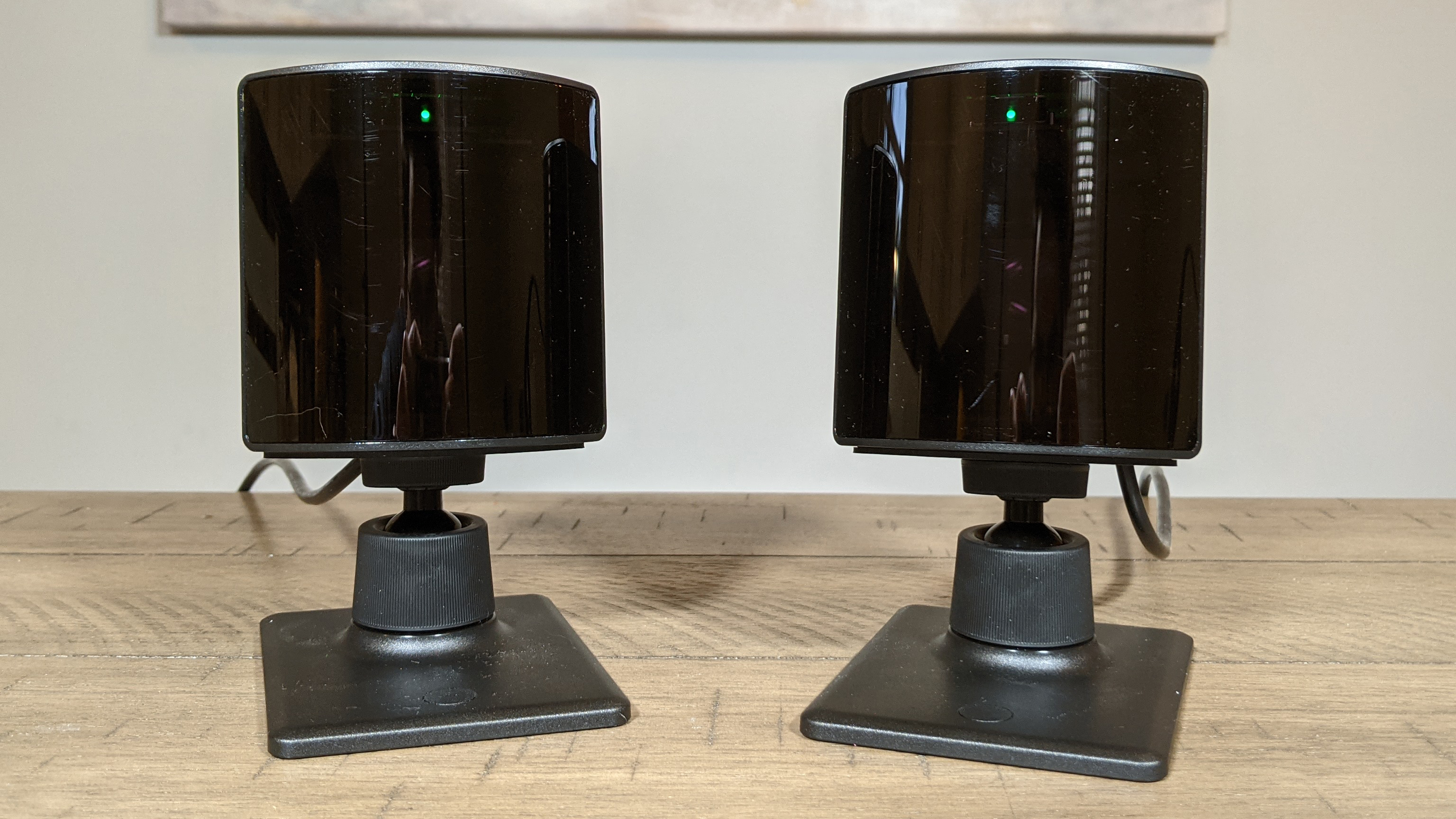
When you first get to SteamVR, you get access to four tools: the Colorizer (paints objects), the Air Brush tool (draw in the air), the Multi-Tool (can freeze, clone, unthaw and delete objects) and the Cache Finder tool (used to find secrets in environments). When you go to other environments and pick up caches, you’ll unlock more tools. I received the Drone Controller tool after picking up my first cache. This let me control a cool little drone that fires lasers.
When you pick up objects from different environments, they automatically get added to your Things. This includes a library of objects such as furniture, props, wearables, etc. You can use these to customize your environment once you choose a template to base your home on. The only annoying part about environments is that the first one you get seems to be the only one that gives you the ability to quickly check out environments via a giant panel that you don’t have access to in your Things.
Another frustrating aspect about SteamVR is that there doesn’t seem to be an easy way to move objects around apart from grabbing them with your hands. I spent 15 minutes trying to get a cache by walking forward, turning around in real life, walking forward again and repeating that until I snagged it all because it was just out of reach. There should be a tool for that.
SteamVR’s menu is pretty clean. It consists of four main panels: Environments (choose which map you want to go to), Things (what objects you want to mess with), Avatars (customizing your avatar) and Quests (tells you where the caches are for the week). From here, you can save the current environment as your home (where you’ll go when you boot SteamVR), go home or change your background (the background between loading screens). There’s also a Tutorials tab at the top to guide you through SteamVR as well as the Settings tab. The only settings you get access to in this app relates to multiplayer. Finally, there’s a Social tab that lets you host rooms and figure out what your friends are up to.
Valve Index interface
There’s a big difference between SteamVR’s menu and the Valve Index’s menu, which you can access by clicking the system button on either of the controllers.
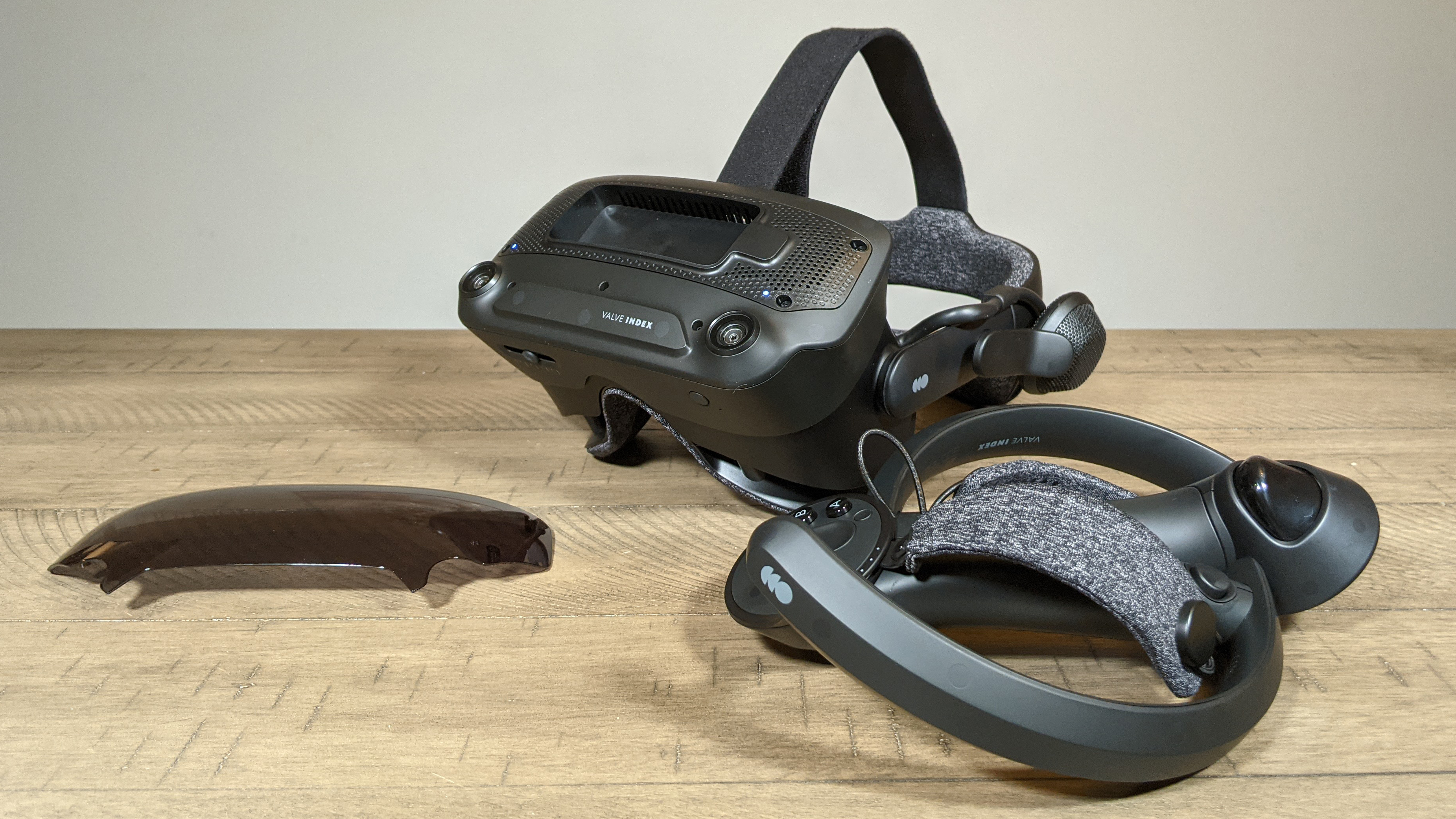
The Valve Index’s system interface features 9 buttons on its bar that are displayed in front of you. From left to right, there’s Menu (exit VR, exit SteamVR Home, turn off controllers or open Steam), Desktops (displays your desktop), Library (shows off your games library), SteamVR Home (takes you back to SteamVR), Store (shows games available to purchase), Reset Standing Position, Toggle Room View, Volume and Settings.
The Setting area is dense (keep in mind I’m viewing the settings with Advanced Settings enabled, which is found in the bottom-left corner). There’s a General tab that lets you configure the refresh rate (80Hz, 90Hz, 120Hz or 144Hz), display brightness, motion smoothing (ironically I found that turning this off leads to less jankiness), render resolution, dashboard position, notifications, SteamVR always on top, pause VR when the computer is locked and SteamVR Home.
The Play Area tab includes settings for the ultimately useless Chaperone, which is supposed to act as your collision barrier. You can configure the color, height, activation distance and the type of grid that it uses. The Dashboard tab features several settings that enable and disable certain elements. The Controllers tab lets you edit your controller bindings and thumbstick settings.
The Video tab goes more in-depth with settings like Advanced Supersample Filtering, Overlay Render Quality, HDCP 1.4 Legacy Compatibility, Index Display Column Correction and Pause VR when the headset is idle. The Audio tab gives you settings to manage output, input and audio mirroring. The Camera settings give you a 2D or 3D map of the room. There’s also a Startup/Shutdown tab that’ll let you configure some power options. Finally, there’s the Developer tab, which includes settings that probably aren’t useful to you.
Valve Index performance
The Valve Index’s dual 1440 x 1600-pixel LCD lenses feature a super smooth 144Hz refresh rate, which is a higher refresh rate compared to the Oculus Rift S’ 80Hz or the Vive Cosmos’ 90Hz. Gaming felt incredibly immersive and smooth. However, I did experience a few issues with tracking, as games would occasionally stutter. Unfortunately, unlike Oculus' headsets, the tracking is heavily reliant upon the base stations instead of the headsets. Hopefully, with the next iteration, Valve does away with the base stations and invests in better built-in camera tracking.
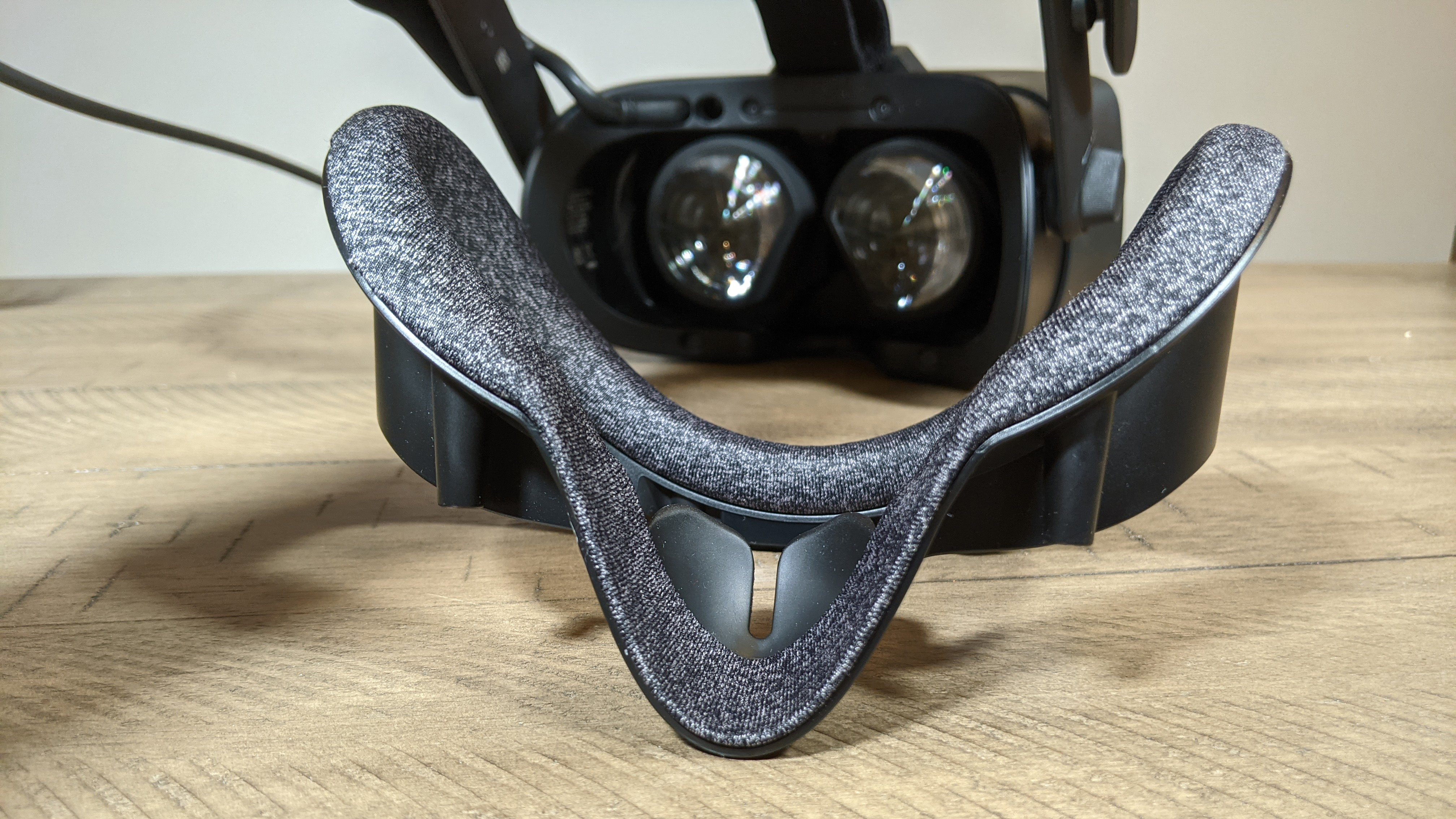
The best VR game on the Valve Index is obviously Half-Life: Alyx. Nothing beats the feeling of outmaneuvering a barnacle by dragging a barrel over and then running into a space to blast headcrab zombies. The Valve Index made me forget that I was playing a game that didn’t really work in my favor as I had to jump into a creepy subway station filled with baddies. The whole experience was immersive thanks to the Valve Index’s controllers and high-refresh-rate display. However, as mentioned earlier, there were occasional stutters in the game, and I also noticed that the tracking on the controllers would hiccup.
A tour in No Man’s Sky was very interesting. The first thing I did was make a fist and punch some poor animal that looked at me funny. Surprisingly, it died. What I took away from that is No Man’s Sky doesn’t feature full finger detection, but it does detect when my fist is open or closed. I hopped in my ship and was introduced to flying. The coolest thing about No Man’s Sky in VR with a Valve Index is that, in order to grab things like the ship’s control sticks, you have to squeeze the controller a bit to actually grab them. This was really neat for the first few minutes but I found my hand getting tired from clenching. However, getting the haptic feedback from the ship’s movements was an awesome experience.
I played The Forest, which was super janky since the VR mode was in beta, but this game also detects individual finger movement. At first, it was difficult to determine the positions my fingers were supposed to be in, as it seemed different in this game than Half-Life: Alyx, so I had to readjust the controller strap. Overall, the Valve Index’s performance seemed smooth, even though the game felt like a nightmare to play in VR for various reasons.
Valve Index games and apps library
When we’re talking about games, Valve Index has both the worst and the best selection out there. Let me explain.

With the Valve Index, you get access to one of the best games of the year, Half-Life: Alyx, but that’s pretty much the end of Steam’s exclusivity with VR games (to be clear, it’s exclusive to Steam, not to the Valve Index). That’s the one and only game and it doesn’t exactly justify spending over $1,000 to play.
Valve Index does get access to one of the best PC platforms out there: Steam. The issue is that this platform isn’t exclusive to the Valve Index, so it doesn’t have any advantage over other headsets. In fact, not every VR game on Steam is compatible with the Valve Index. Then again, the app does give you access to thousands of VR games, more than Vive or Oculus have on their own proprietary apps.
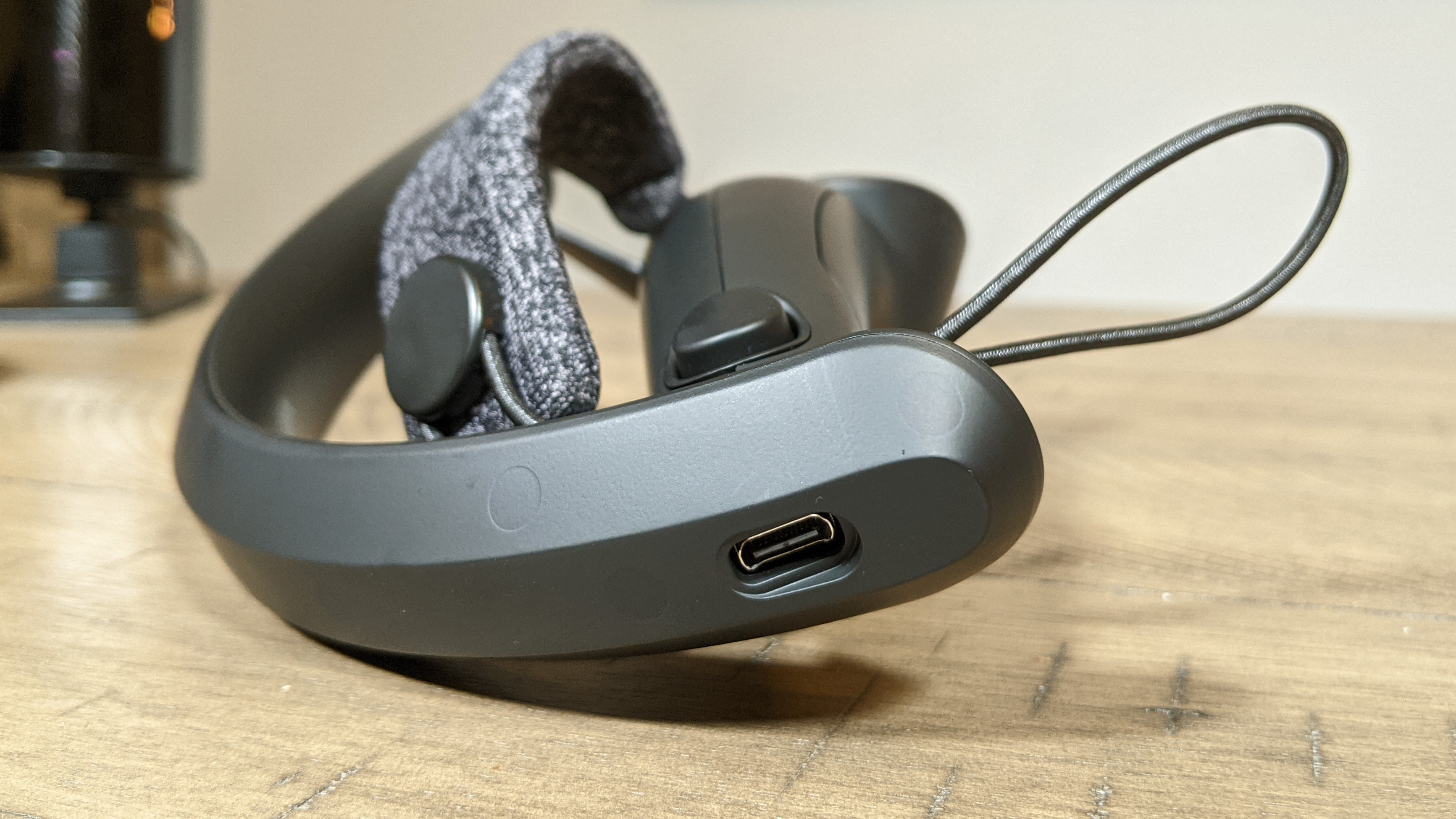
Like the other headsets, you can access a ton of games as well as different apps such as Google Earth VR, which is an explorable 3D mockup of the planet. There are a few “documentaries” too, but nothing that lives up to BBC productions found in the Oculus app.
Valve Index is a headset that lacks access to unique software. It should have an edge over other headsets, especially in its own software. Even its best game, Half-Life: Alyx, can be played with a Vive or Oculus. So keep in mind that if you’re shelling out $1,000 on the Valve Index, it’s for the hardware alone.
Valve Index comfort
Every VR headset is different in how it approaches comfort and what is needed to get a comfortable fit. Due to my glasses, I had a bumpy experience trying to get comfortable, but after I settled in, I found that the Valve Index is arguably the most comfortable headset on the market. Don’t get me wrong, this thing is heavy, but it felt extremely secure on my head even after hours of playtime.
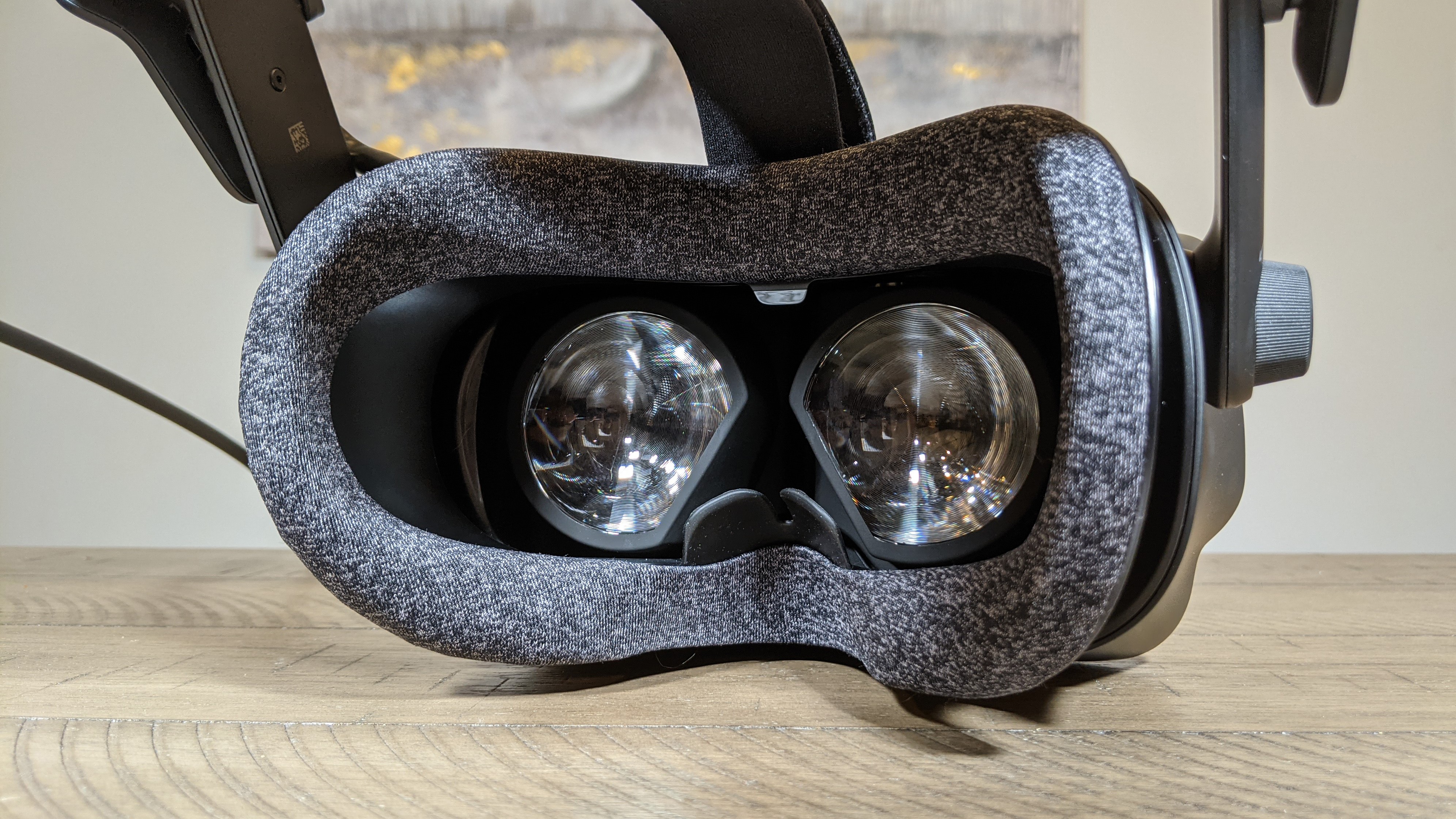
When trying to get comfortable, there are four things you need to tinker with: the headset adjustment knob to tighten the headset until it's snug; the velcro strap to ensure the weight of the headset is evenly distributed on your head; the eye relief knob to adjust the depth of the lenses (this is super important if you wear glasses); and the IPD slider to ensure that the display looks focused and is attuned to your eyes.
The visor can even flip up and down, similar to the Vive Cosmos. It doesn’t go a full 90 degrees like the Cosmos, but it’s enough to fit my big glasses in first before flipping the rest of the headset down on my head. Unfortunately, since there’s no front headband, and the only thing holding the headset up is my eyes, I can’t comfortably wear the headset while flipping the visor.
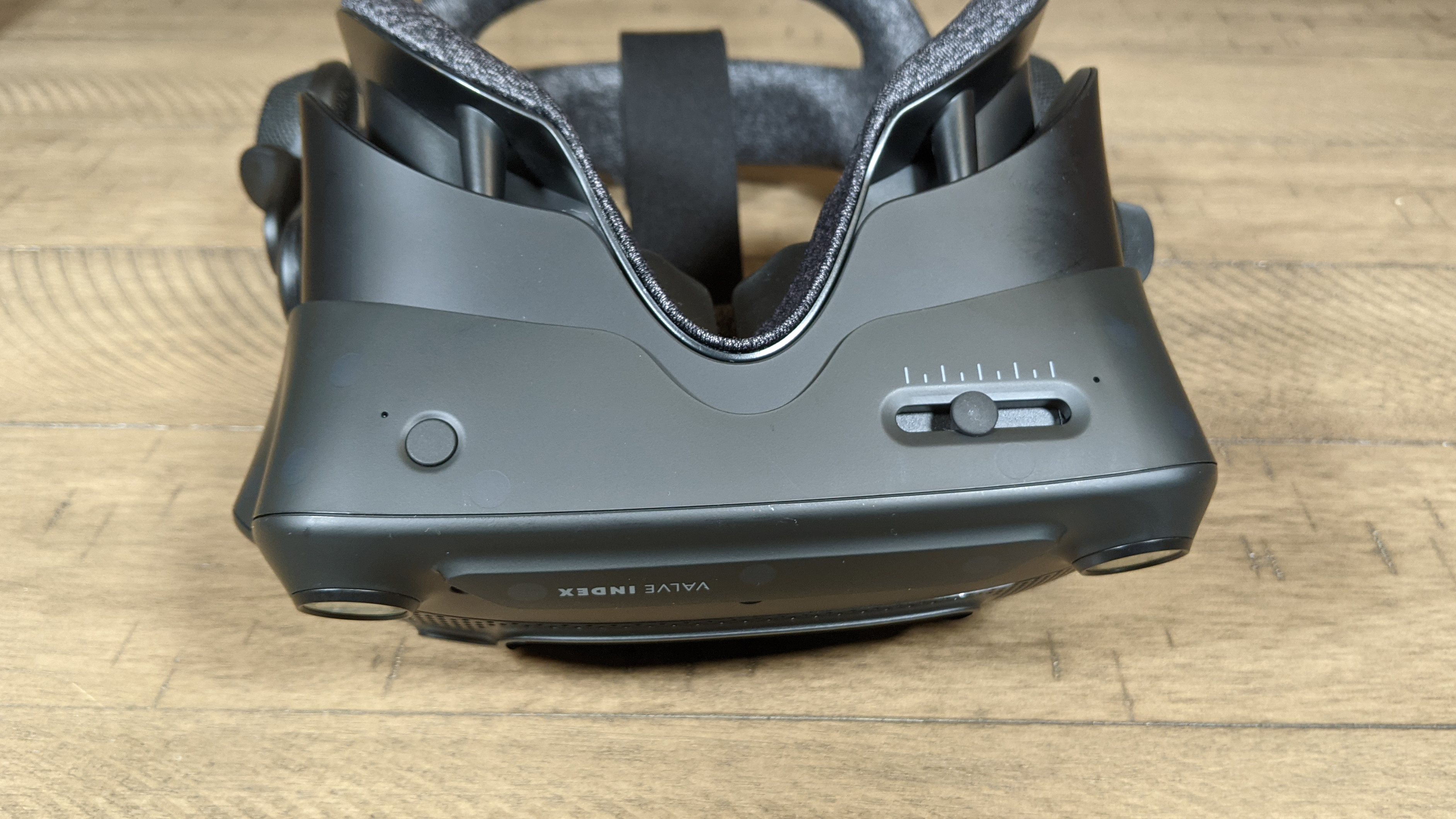
However, the depth adjustment knob and flippable visor gives the Index the best of both worlds in terms of comforts. And if you happen to have a smaller head, or if you want to give this to a teenager, there’s a little cushion included with the VR Kit that will make up for that extra space.
When it comes to discerning the comfortability of games in the store, it seems that both Valve and Vive need to take pointers from Oculus. The Oculus Store has a cool feature that uses color and shape ratings to tell you how comfortable a game will be in VR. The only comfort rating on Steam is a game's play area options: if it's played seated, standing, room-scale or all three.
Valve Index controllers
What if you took VR controllers and actually made them comfortable and work well? Well, that’s what Valve did with the Valve Index controllers. The controllers fit like a glove, as you have to slide your hand through a cushiony strap. Each Valve Index controller has a thumbstick, two face buttons, a system button, a trackpad (where your thumb goes) and a trigger (for your index finger). The rest of your fingers wrap around the handle of the controller, and thanks to the sensors that surround the handle, the controllers detect the motion of each of your fingers.
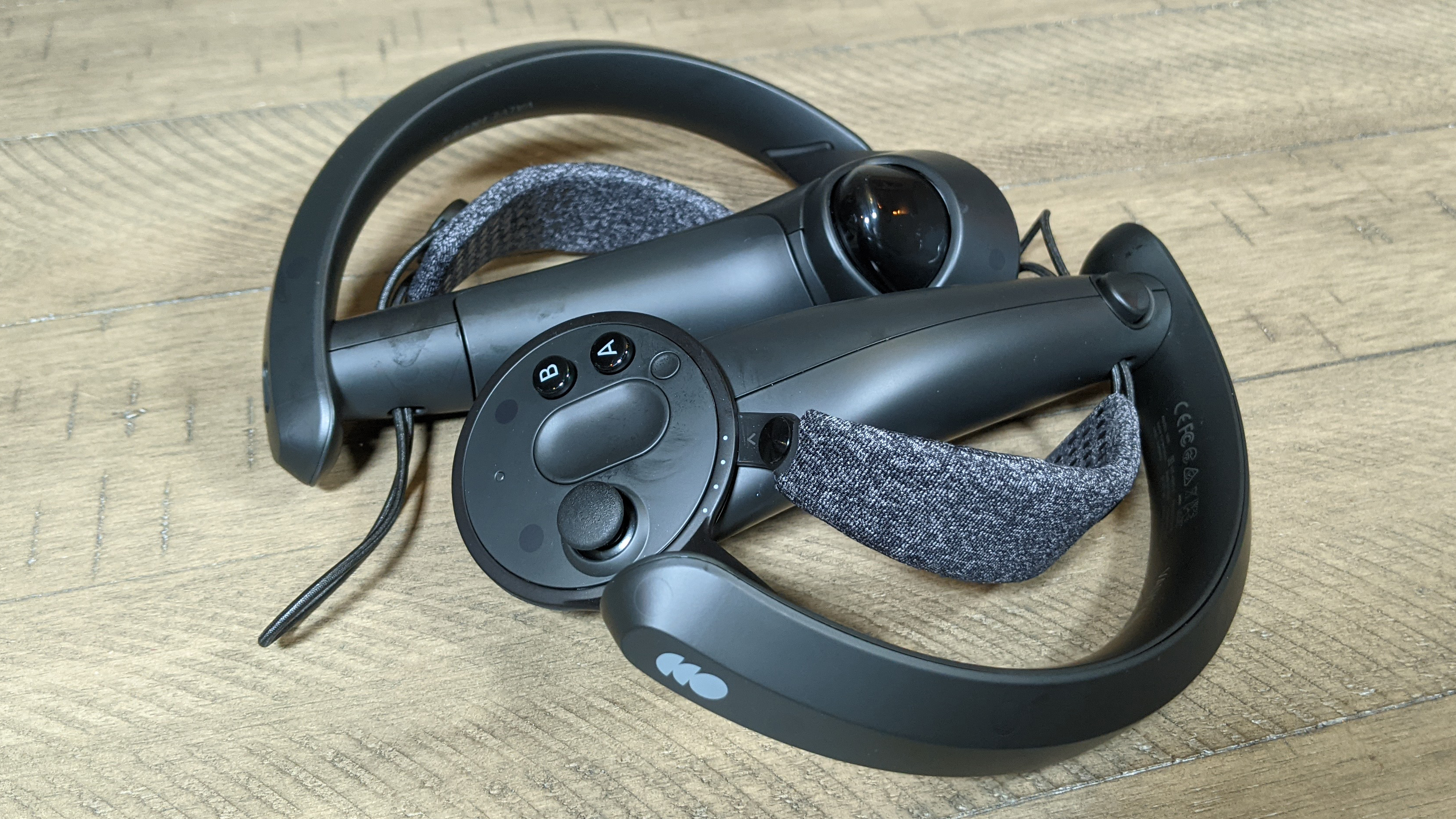
It takes a few tries to get the right fit for the controllers, as you have to adjust the position of the strap and how snug it sits. The goal is to touch all of the face buttons without straining your thumb. Thanks to the ability to customize the fit, the Valve Index controllers serve way more people than VR controllers from other competitors. I never found myself in a position where I was accidentally clicking face buttons. And thanks to the strap, I can open-hand slap objects out of the way in Half-Life Alyx, or wave at other players in SteamVR.
While the grip is definitely more comfortable than competing controllers, I found myself struggling to adjust my fingers to where they’re supposed to be according to the sensors. It would’ve been nice to have some external indicators, like symbols on the controllers or maybe textured grips in the shape of fingertips.

The controller also features haptic feedback, so when I touch or grab something in-game, I can feel myself actually touching it. It’s not the game-changing-level of vibration that the PS5 DualSense has, but it’s just enough to immerse me. The controllers alone are $279, so clearly a lot of money went into them. It’s going to take a lot for Oculus or Vive to compete.
Yet again, unlike its competitors, the Valve Index controllers have internal batteries that charge via USB Type-C, so you won’t have to worry about a battery panel coming loose (ahem, Oculus). However, at 7.0 ounces, it is heavier than the Oculus Touch controller (3.7 ounces), but is lighter than the Vive Cosmos controller (7.4 ounces).
Valve Index audio
The Valve Index’s headphones aren’t seamlessly integrated in the same way as the Oculus Rift S’ speakers nor are they as configurable as the headphones on the Vive Cosmos, but they are similar in design. The headphones are small, but unlike the Cosmos’ headphones, they are designed to hover near your ear instead of on top of them. It’s frustrating that the headphones can’t get closer to my ears, because that’s a lot of potential sound lost. However, the headphones are still relatively loud.
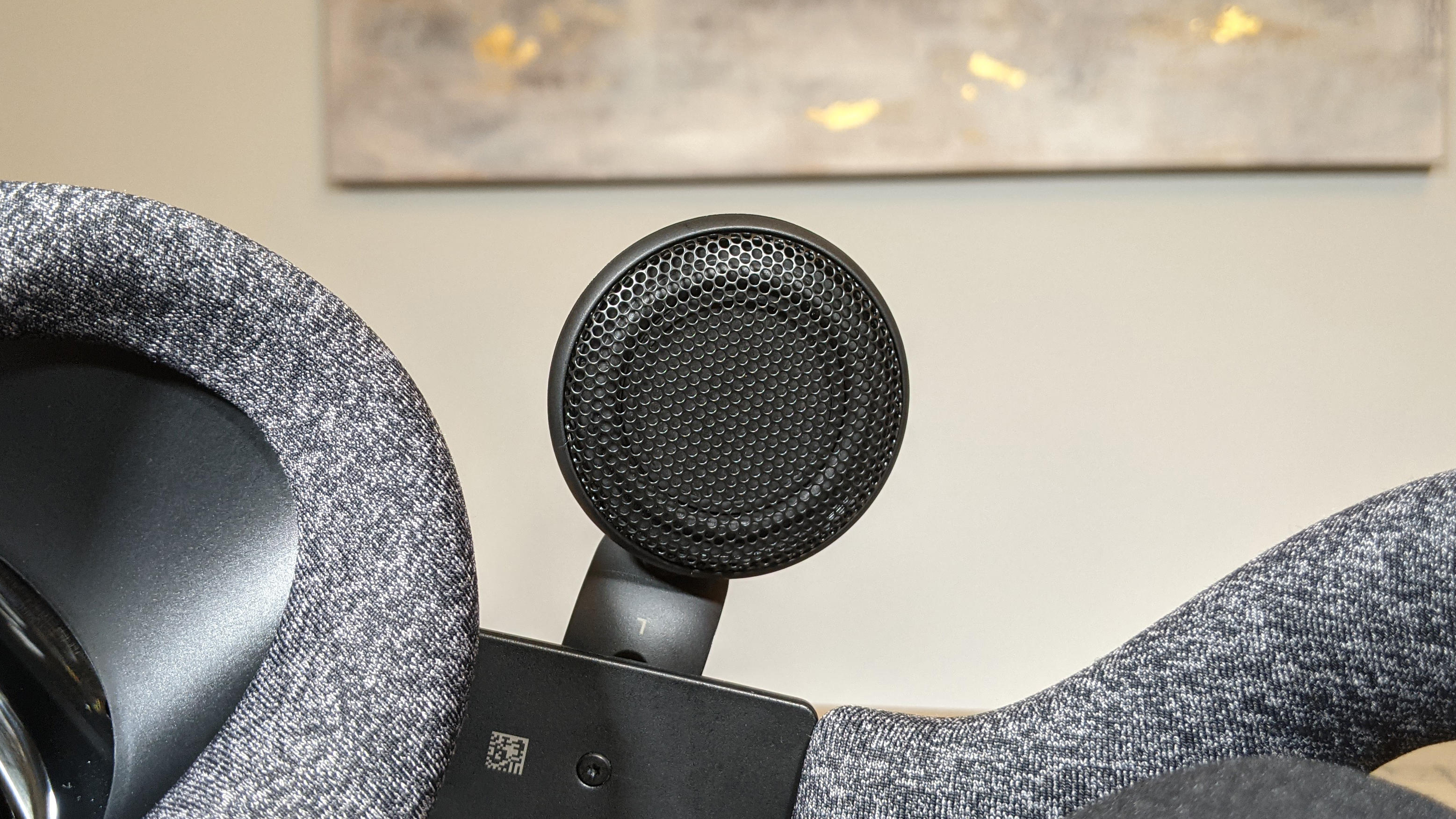
As I attempted to navigate through a hoard of barnacles in Half-Life: Alyx, I took one wrong step and my screen faded to red. I heard the thick gnawing and crunching on my body, and as I began to freak out, I fumbled for my gun, then unloaded all of my rounds at the ceiling, each gunshot resonating a hearty blast.
In No Man’s Sky, I used my laser gun to suck the precious resources from planet New Tinasusa dry in order to sell them in a different solar system like the capitalist I am. The laser had an almost harmonic tune as it buzzed the carbon free from a flora lifeform. When I hopped in my ship, the thunderous wave from my booster melting the planet’s surface as I took off sounded oh, so satisfying. However, as I was technically in a “meeting” I had my laptop on in the corner of the room and the audio from my call occasionally overshadowed what I was listening to.
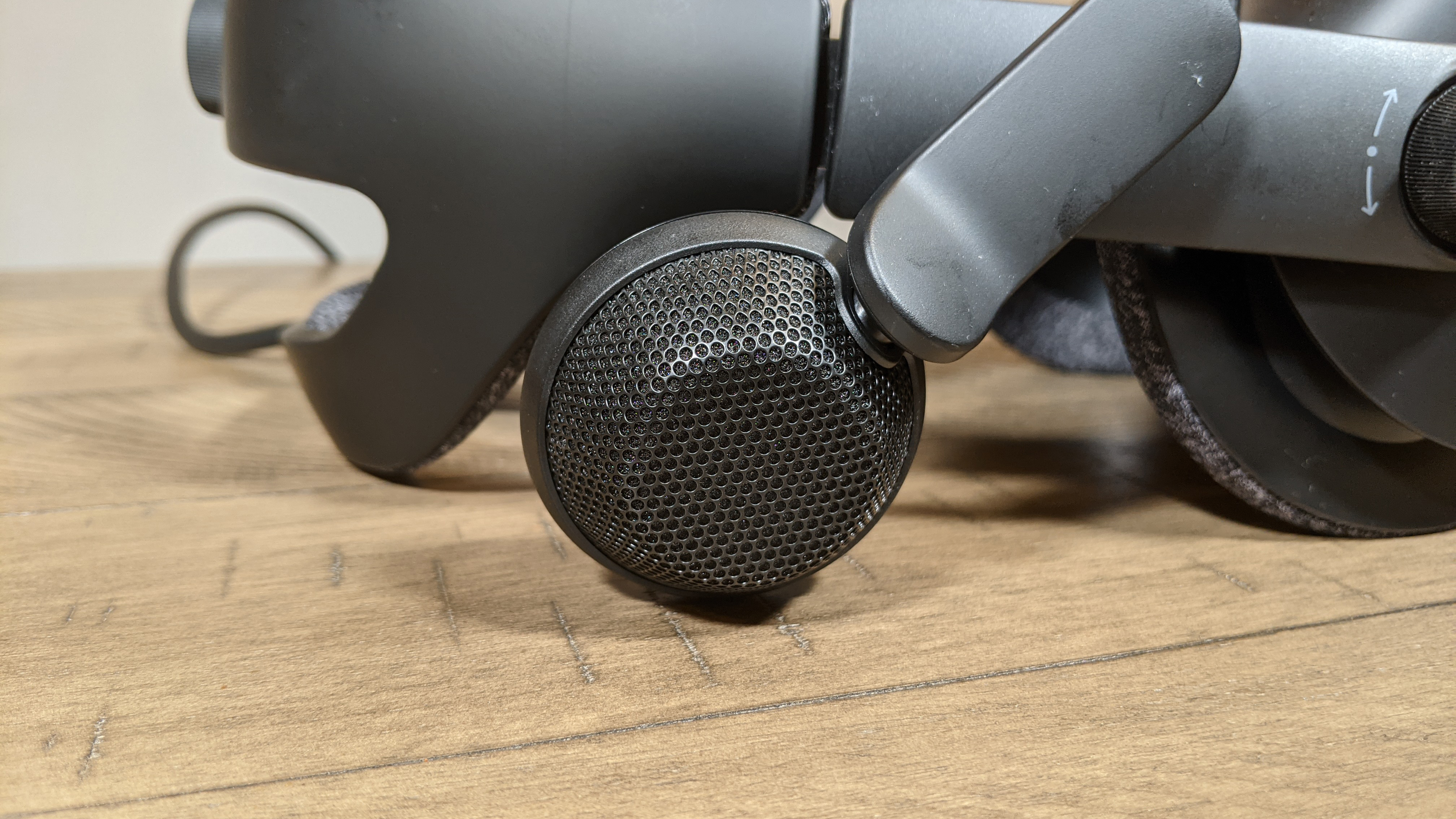
If you’re looking for more immersive audio, you can disconnect the speakers and detach them from the headset, so you can find your own audio solution thanks to the 3.5mm audio jack.
Valve Index social
With Valve headsets, players and their friends are connected to each other via Steam, so Valve doesn’t need to put in the extra work by creating a new social system. However, it could use some improvement.

Firstly, the Social section in SteamVR Home is useless. It’s only there to invite and join friends in SteamVR Home. When pulling up the system menu, there’s no discrete section for Social. The only way to get to your friends list outside of SteamVR Home is by pulling up the VR version of Steam via the menu button. It takes one too many clicks to access and the VR version of Steam isn’t as clean as the rest of the menus.
However, since there’s voice chat functionality built into Steam, it’s super easy to get a game set up and start chatting with your friends. When I invited CNN Underscored senior writer, Michael Andronico, to a chat, he commented that my voice sounded clear, loud and full-bodied thanks to the built-in microphone in the Valve Index. If Steam isn’t your thing, you can easily access your desktop through VR to hop into a Discord chat as well.
Valve Index store
Similar to its social advantage, Valve has a huge advantage with its store. It’s familiar, and for better or worse, people have already established opinions about it, so at the very least, gamers will be comfortable using it.
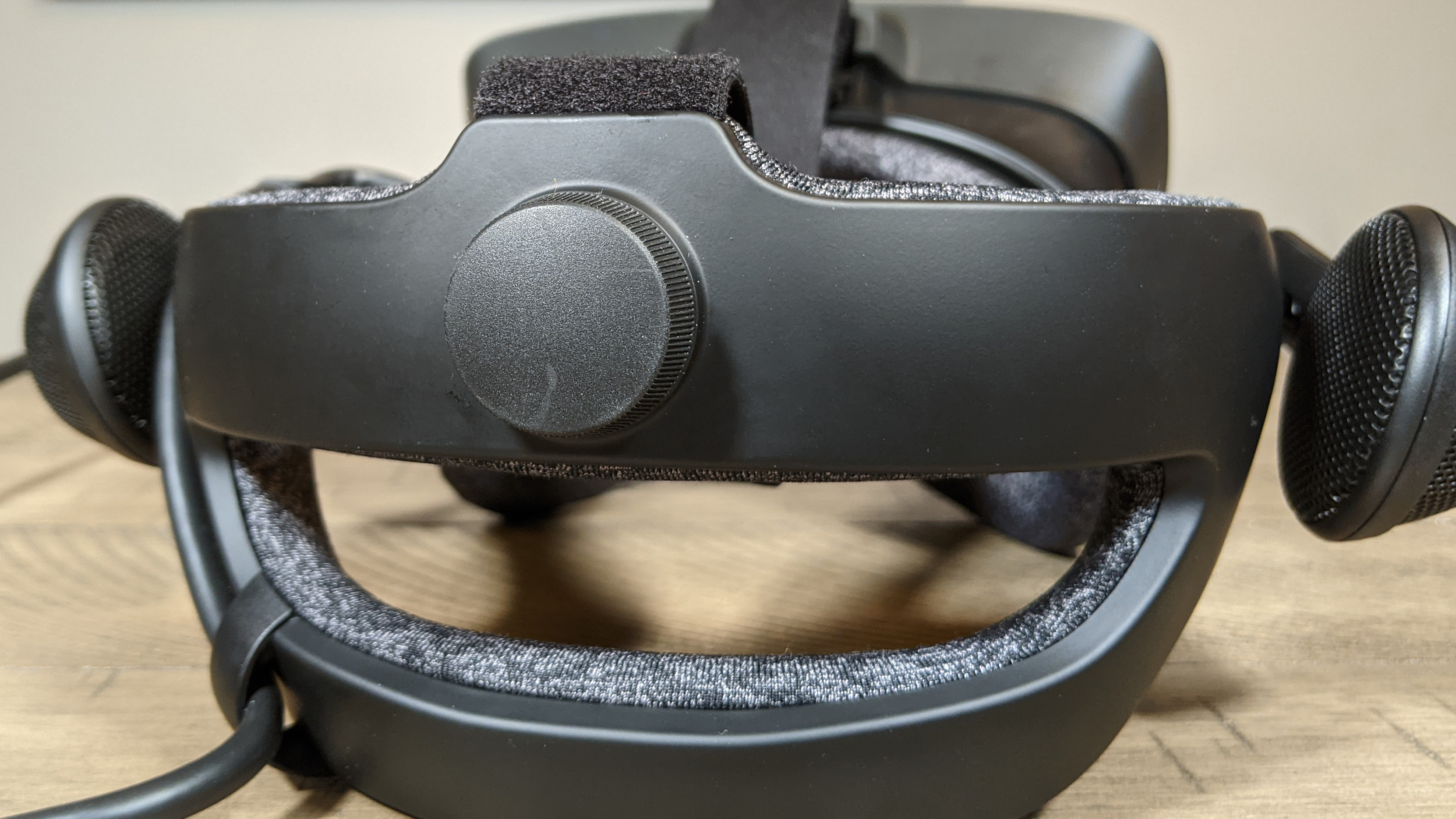
You can access the store via VR or desktop, but I’ve found the desktop to be the superior experience. I attempted to download Star Wars Squadrons via the VR version of the store, but it said I didn’t own the game and that I have to purchase it first, which was annoying because I did own it. So, I went through the desktop version to download it for the Index.
There are technically two versions of the VR store. One is clean and built into the system menu. It gives you a brief overview of the top single-player, top multiplayer and top free VR games on Steam. Meanwhile, the real VR version of Steam showcases every game available and even features category breakdowns and an easy-to-use autofill search engine. You can even look through all games or all apps sections, but you’ll have to add the VR Support tag because it does include all games on Steam.
When you’re on a page for a game, it looks similar to the Steam version except it’s more tightly packed to fit a wider screen. The only issue I have with it is that the VR support section, where it displays compatible headsets and types of VR play, is tucked away. It should be front and center, laid out with symbols and text, similar to the desktop version.
Bottom line
I am thoroughly impressed with the Valve Index, and I mean that in both a good and bad way. Technologically, it’s amazing, given how the controllers function and how smooth the display is. However, seeing my fingers move one by one isn’t really worth the risk of bashing my head into a wall. Valve clearly has the tech, as the Index impressively mapped out my room quite well. It just needs to add software to make an automatic collision warning system. Playing with the Valve Index is almost like working out, you need someone to spot you when you’re in the zone.
Unless you have a huge space to play, I recommend going with the Oculus Rift S or Oculus Quest 2. Not only are they much cheaper, but they both have amazing collision warning systems and offer a great selection of exclusive games.
However, if you can get over some of the hurdles the Valve Index puts in front of you, literally and figuratively, and if you can actually afford it, the Valve Index is an amazing VR headset.

Rami Tabari is the Reviews Editor for Laptop Mag. He reviews every shape and form of a laptop as well as all sorts of cool tech. You can find him sitting at his desk surrounded by a hoarder's dream of laptops, and when he navigates his way out to civilization, you can catch him watching really bad anime or playing some kind of painfully difficult game. He’s the best at every game and he just doesn’t lose. That’s why you’ll occasionally catch his byline attached to the latest Souls-like challenge.

